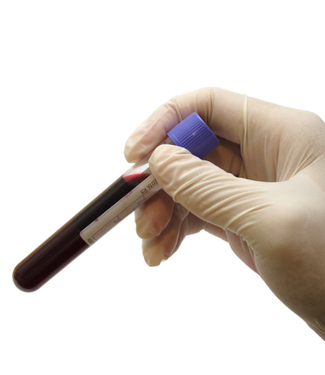PSA Screening for Prostate Cancer Declined in Men Over 50
PSA-based screening for prostate cancer among men older than 50 has decreased since the 2012 USPSTF recommendations.
Image © Eugene-Sim / Shutterstock.com

Screening rates for prostate cancer among men older than 50 has decreased since 2012, according to the results of a study published in the Journal of Clinical Oncology.
While prostate-specific antigen (PSA)-based screening rates among 40- to 49-year-old men did not significantly change between 2010 and 2013 (12.5% vs 11.2%; P = .4), screening rates did significantly decrease among 50- to 59-year-old men (33.2% vs 24.8%; P < .01). Screening rates also decreased among 60- to 74-year-old men (P < .01), and in men 75 years and older (P = .03).
Still, a large proportion of men with at least a 52% risk of 9-year mortality continued to be screened for prostate cancer, and about one-third of men over 75 underwent screening, according to estimates in the study.
“While we weren't surprised to see a decline in screening, we were disappointed to see the way these declines have occurred,” said study author Michael W. Drazer, MD, of the department of medicine at the University of Chicago Medical Center in Chicago. “Instead of observing large declines among older, less healthy men who are at the highest risk for overdiagnosis and overtreatment, the steepest declines in screening were observed among younger, healthier men.”
In 2012, the US Preventive Services Task Force (USPSTF) released recommendations against PSA screening in men who have no symptoms or are not at high risk of prostate cancer. Based on the available evidence, the USPSTF deemed that the harms of PSA screening outweigh the potential benefit, stating that this type of screening results in a large proportion of men diagnosed with asymptomatic prostate cancer that is not likely to progress during their lifetime.
Drazer and colleagues used data from the National Health Interview Survey to capture how self-reported prostate cancer screening rates may have shifted as a result of the 2012 USPSTF recommendations.
While PSA testing remains the best tool for prostate cancer screening of younger, healthier men who will live long enough to benefit from early detection, noted Drazer, “our findings suggest it is a tool that isn’t being used properly for its intended purpose.”
The 2008 USPSTF recommendation to discourage PSA screening for men older than 75 did not “appreciably alter screening rates,” according to the authors.
While the current USPSTF guidelines discourage screening for any healthy men, Drazer says he and study coauthors disagree with this all-or-nothing recommendation, as PSA screening may be beneficial for certain healthy, asymptomatic men. “We feel strongly that there needs to be some middle ground,” said Drazer. In contrast to the USPSTF guidelines, both the American Cancer Society and the American Urological Association promote screening based on age and estimated remaining life expectancy.
Navigating Treatment Intensification in Metastatic Hormone-Sensitive Prostate Cancer
A patient case of a 50-year-old man with hormone-sensitive prostate cancer sparked a debate among oncologists regarding the best course of action.